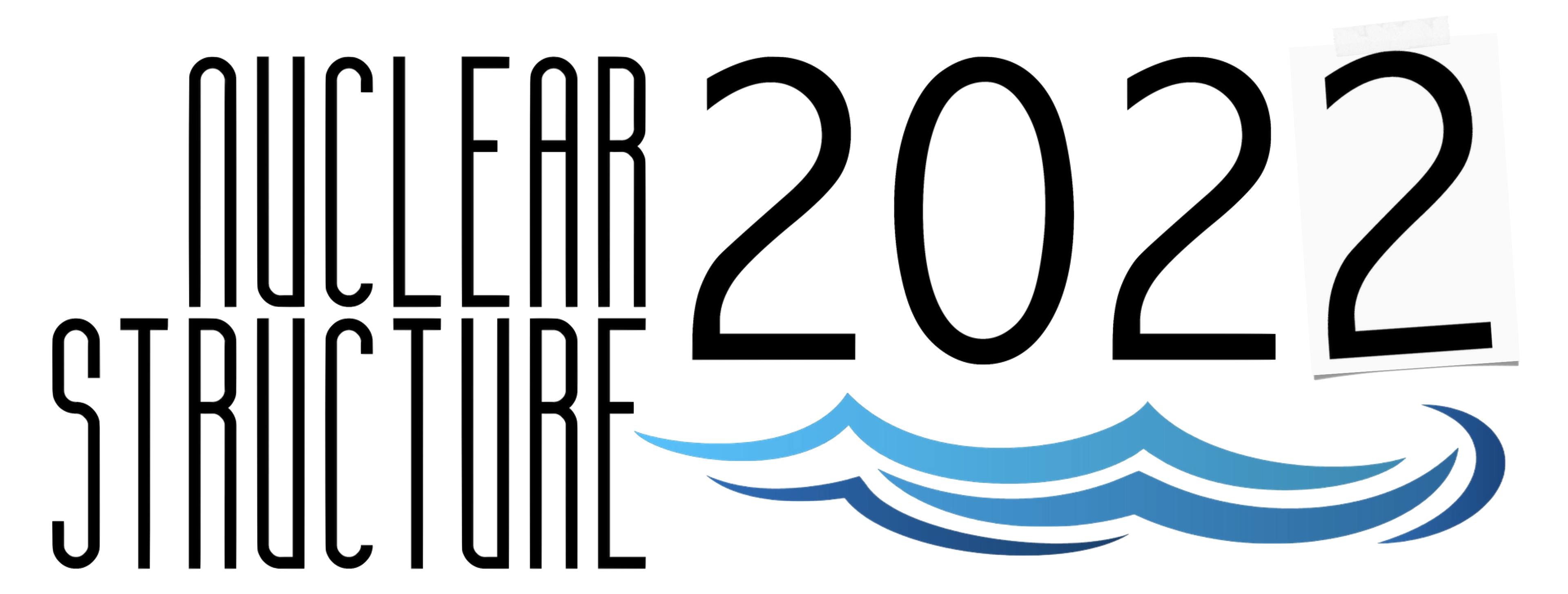Speaker
Description
Different parameterizations of Skyrme energy density functionals show large variations in the stiffness of the neutron equation of state (EOS), making extrapolations to higher densities uncertain [bro00]. It has been shown that the difference in mirror pair charge radii is correlated with the L parameter, which is the slope of the symmetry energy in the nuclear EOS [bro17]. By placing constraints on L, the neutron equation of state can thereby be constrained. In the present study, the charge radius of neutron-deficient 54Ni was determined for the first time using collinear laser spectroscopy at the BEam COoling and LAser spectroscopy (BECOLA) facility [min13, ros14] at NSCL/MSU. Using the difference in mirror pair charge radii between 54Ni and 54Fe, a constraint of 20 ≤ L ≤ 70 MeV has been placed [pin21], consistent with results from the gravitational wave event of the GW170817 neutron star merger [rai19] and barely consistent with those from PREX-II [ree21]. Constraints on the neutron skin for 48Ca from this experiment are in agreement with the preliminary CREX results released at DNP 2021, implying a “soft” EOS and contradictory to the PREX results. In addition to the experimental results, a new trend analysis will be discussed, which evaluates the reliability of the difference in mirror charge radii as a good isovector indicator [rei22].
*This work was supported in part by grants NSF No. PHY-15-65546, PHY-21-10365 and PHY-21-11185; German Research Foundation SFB1245.
References
[min13] K. Minamisono et al., Nucl. Instrum. Methods Phys. Res., Sect. A 709, 85 (2013).
[ros14] D. M. Rossi et al. Rev. Sci. Instrum. 85, 093503 (2014)
[bro17] B. A. Brown, Phys. Rev. Lett. 119, 122502 (2017).
[bro00] B. A. Brown, Phys. Rev. Lett. 85, 5296 (2000).
[pin21] S. V. Pineda et al. Phys. Rev. Lett. 127, 182503 (2021).
[ree21] B. T. Reed et al., Phys. Rev. Lett. 126, 172503 (2021).
[rai19] C. Raithel and F. Özel, Ap. J. 885:121 (2019).
[rei22] P.-G. Reinhard and W. Nazarewicz, Phys. Rev. C 105, L021301 (2022).

